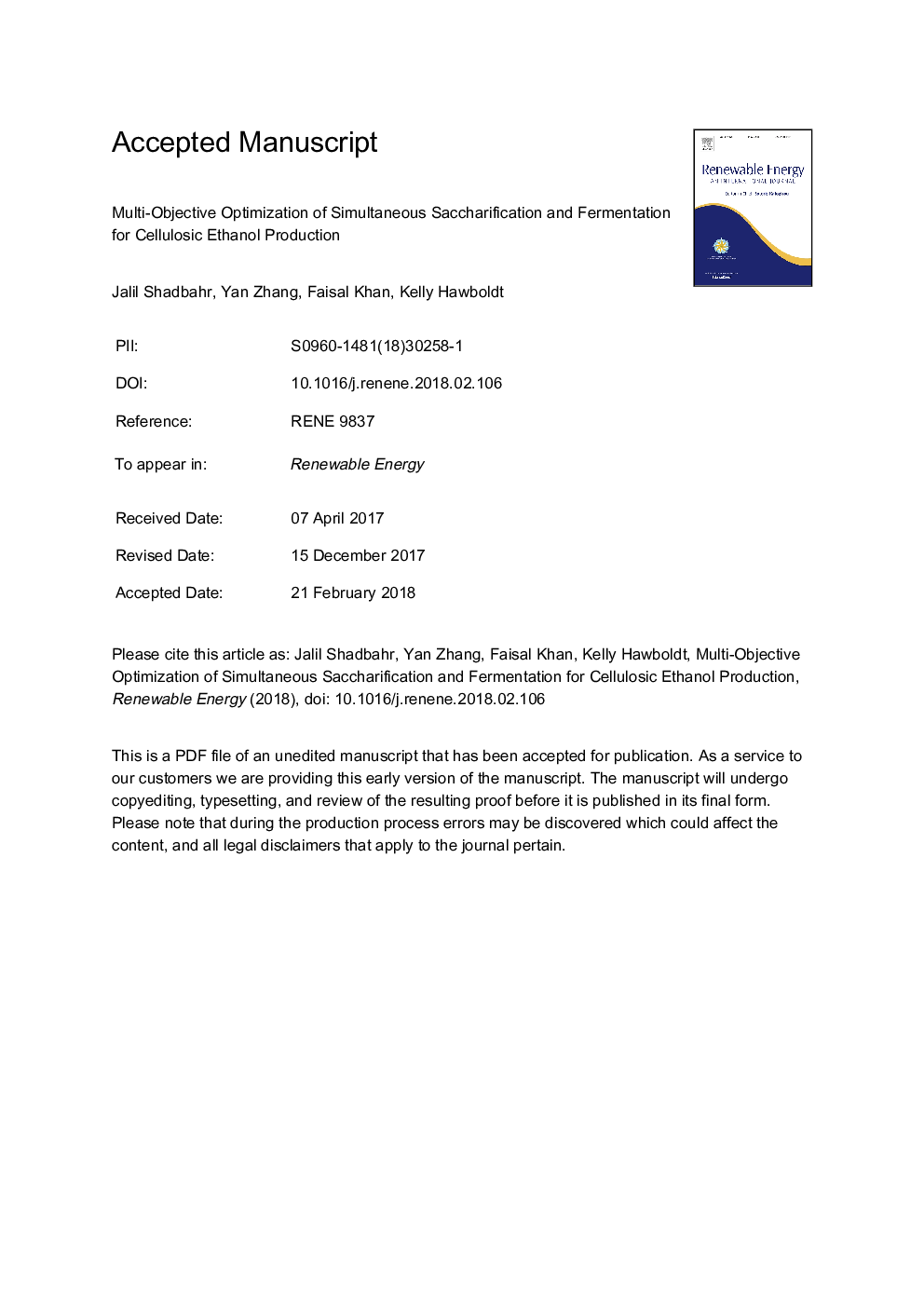| Article ID | Journal | Published Year | Pages | File Type |
|---|---|---|---|---|
| 6764302 | Renewable Energy | 2018 | 22 Pages |
Abstract
A multi-objective optimization of simultaneous saccharification and fermentation process for cellulosic ethanol production was carried out to simultaneously maximize the ethanol yield/cellulose conversion and minimize the enzyme consumption by manipulating the initial sugar concentrations, and cellulose and enzyme loadings. The study was based on an experimentally verified kinetic model. Several bi-objective optimization problems with different combinations of objectives and constraints were solved by a controlled elitist genetic algorithm, a variant of the non-dominated sorting genetic algorithm II (NSGA-II). The optimum operating conditions were verified by experiments. There was significant performance improvement in terms of ethanol yield, cellulose conversion and enzyme loading. An overall 40% reduction of enzyme consumption per ethanol produced was attained at the same ethanol yield (32%) of a non-optimized process. However, the optimum conditions are highly sensitive to the selected kinetic model and associated kinetic parameters therefore, selection of the appropriate kinetic model is critical.
Keywords
Related Topics
Physical Sciences and Engineering
Energy
Renewable Energy, Sustainability and the Environment
Authors
Jalil Shadbahr, Yan Zhang, Faisal Khan, Kelly Hawboldt,
